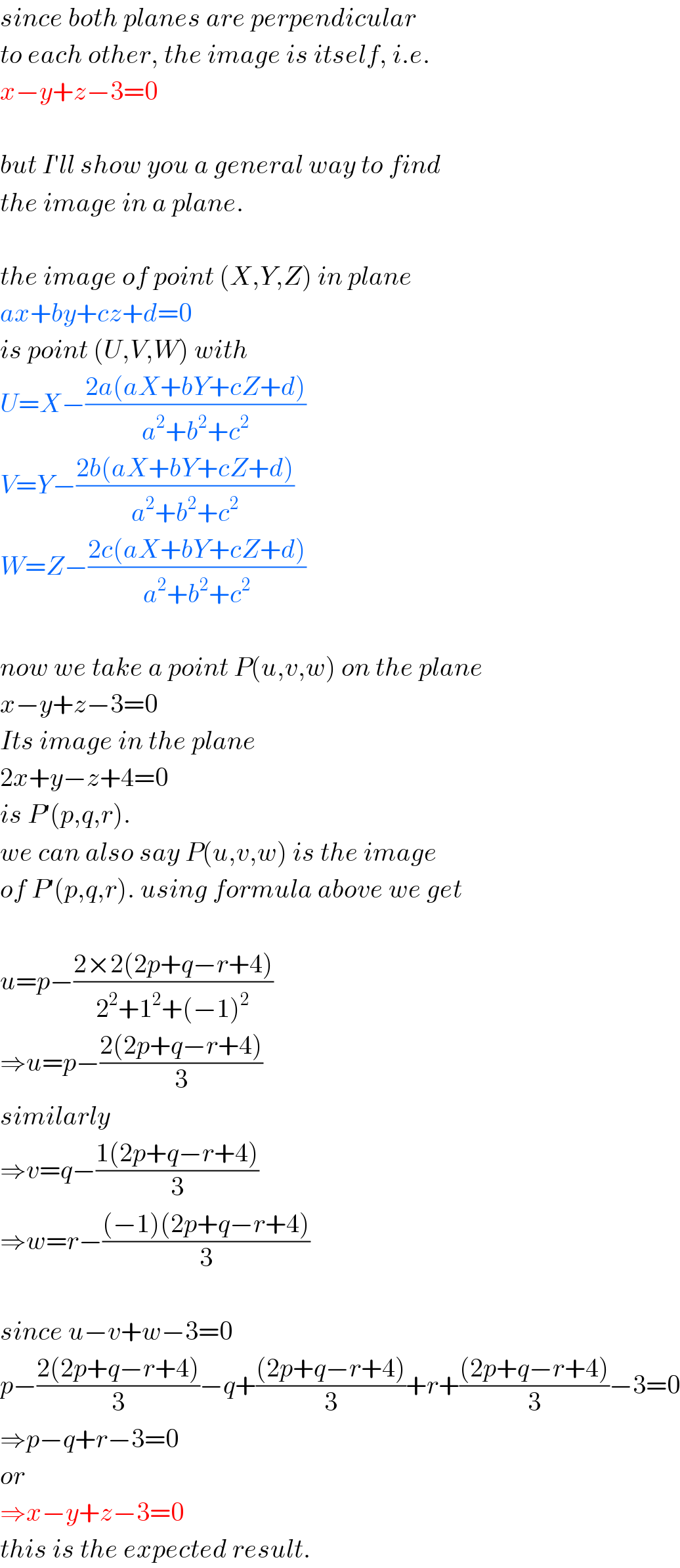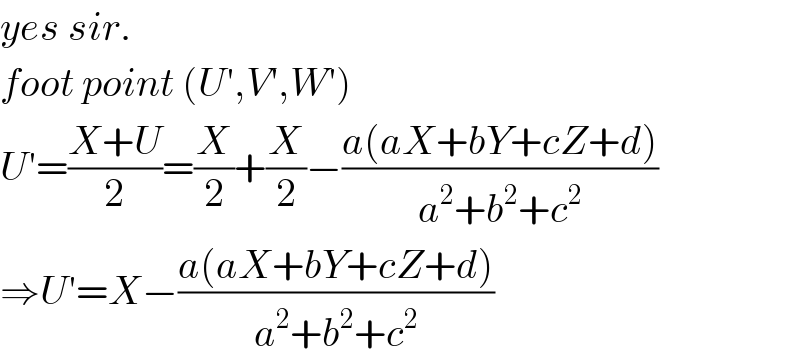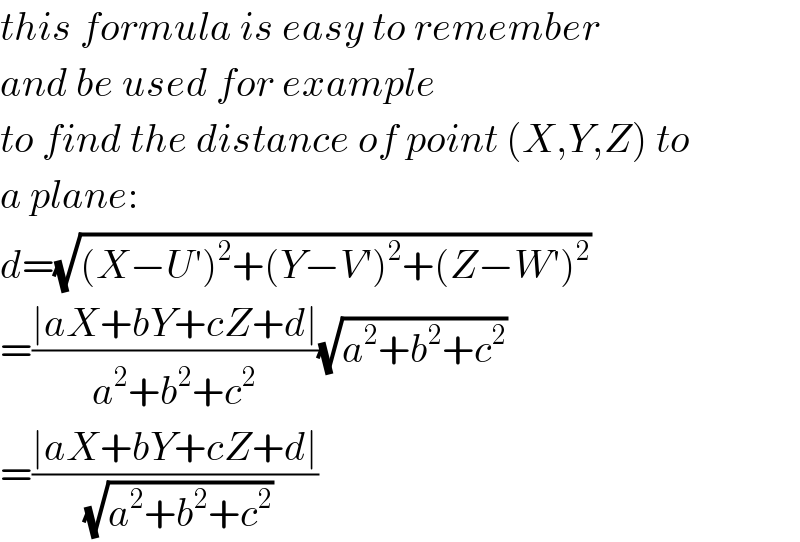
Question and Answers Forum
Question Number 45417 by rahul 19 last updated on 12/Oct/18

Answered by MrW3 last updated on 13/Oct/18

Commented by rahul 19 last updated on 13/Oct/18
Thank you so much sir ! ☺️�� In the formula you posted , if we need to find foot of perpendicular then this factor 2 will not come . right?
Commented by MrW3 last updated on 13/Oct/18

Commented by MrW3 last updated on 13/Oct/18

Commented by rahul 19 last updated on 13/Oct/18

